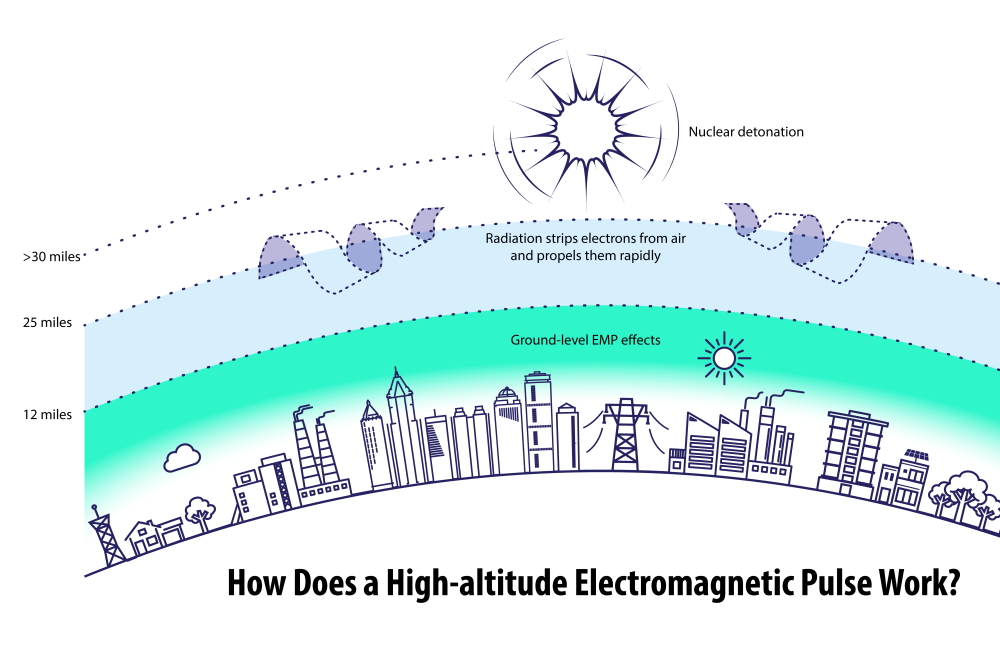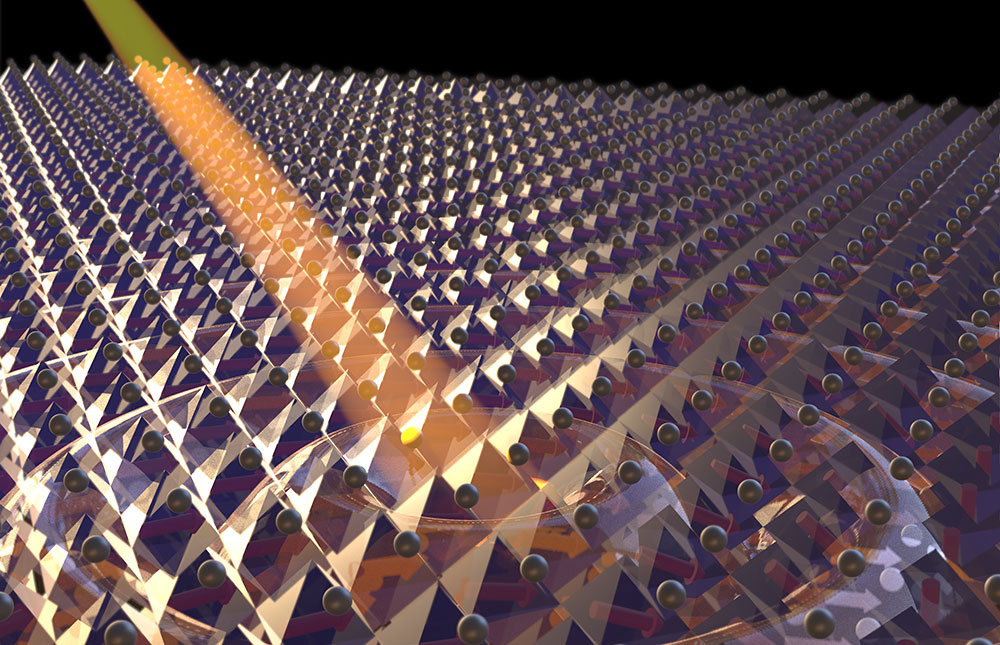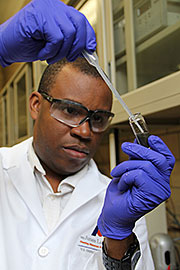
Researchers at the Department of Energy’s Oak Ridge National Laboratory have been leading a project to understand how a high-altitude electromagnetic pulse, or EMP, could threaten power plants.
A nuclear weapon detonated hundreds of miles in the air emits a brief pulse of gamma rays. At that height, the radiation does not directly harm people on the ground. But the resulting intense EMP energy wave can “couple” to power, electronic and communications systems, producing large spikes in voltage or current that destroy the equipment unless it is specially protected. After the initial explosion, the EMP rapidly continues through two more pulse stages that can further impact power transformers, instruments and power system operations.
“Some estimates indicate that if a nuclear weapon was detonated in the atmosphere above middle America, it could cause widespread, extended blackouts and possibly partial collapse of the grid,” said ORNL lead researcher DaHan Liao. “So this is really important because it could be a catastrophic, widespread event.”
Although concerns about EMP risks are not new, they waned somewhat after the end of the Cold War. Global political events have brought new attention to safeguarding the grid from the threat, but Liao said other factors are also key.
“Technology has advanced over the last few decades such that we can even create an EMP without requiring a nuclear weapon. There are strong, efficient microwave transmitters that are portable and could be used by terrorists or bad actors,” Liao said. “Also, today’s electronic equipment is more vulnerable than equipment from the 1960s, because we’re more reliant on semiconductors, and lots of equipment operates at lower voltages. Such small components have less ability to absorb energy surges from EMPs.”
Weaponized electromagnetic generators could now be carried on a missile, an airplane, a large drone or even a truck parked next to a power plant to focus a pulse at the target, said ORNL project manager Larry Markel. “When you look at what’s happening in Ukraine, you see how countries are willing to employ unconventional electronic warfare without going nuclear,” he said.
ORNL collaborated with partners Lawrence Livermore National Laboratory and the University of Tennessee Center for Ultra-wide-area Resilient Electric eNergy Transmission Networks, or CURENT, to examine how an EMP enters a power plant and what damage it can inflict on equipment.
Computer models can be used to understand these outcomes, but it’s hard to confirm their accuracy without unleashing an EMP wave. Liao solved this validation dilemma by taking ambient readings of the low-level electromagnetic activity generated by cellular, broadcast radio and television transmitters. He sampled the signal strength inside and outside buildings and near key equipment at a hydroelectric plant and on the ORNL campus.
The computer models amplified these measurements to simulate how a surge caused by an EMP would affect equipment found at many types of power plants, including those fueled by coal, gas and nuclear power. Hydropower was of special concern because it is usually the first step to jump-starting the grid after a broad regional blackout, Liao said.
The modern power system incorporates an increasing number of solar arrays, wind turbines and batteries that connect to the grid through inverters, which are power electronic components vulnerable to an EMP. Yilu Liu, the UT-ORNL Governor’s Chair for Power Grids, led a team of students injecting low-level signals into working power electronics such as inverters, programmable logic controllers and phasor measurement units. They recorded the results to better understand how these components channel electromagnetic energy and what level of exposure will damage low-voltage electronics.
The UT team also helped simulate how EMP leaks into a building depended on construction materials and available entry points. “We hope the fundamental analysis in this study will have broader applications in equipment protection in general, while providing guidance on how to design buildings for EMP shielding,” Liu said.
Researchers developed a simulation tool that allows utilities to analyze their specific configurations and equipment and predict EMP impacts. The team also used the tool to generate general recommendations for enhancing surge protection equipment, grounding and shielding. Grounding methods that are enough to handle lightning strikes may be inadequate for and EMP, which delivers a faster charge with higher intensity.
“There are more vulnerabilities than we expected, especially in exposed systems outside the facility,” Liao said. “There are cascading consequences that can happen when something small breaks down and prevents something larger from operating.”
While the project sought to reduce risks to power-generating equipment, its results also highlighted the inherent vulnerabilities presented by basic or low-voltage components that underpin electric generation. Cables and wires can act as both antennas for picking up electromagnetic energy and conduits for delivering that energy to attached hardware, rapidly overloading the voltage capacity of simple motors and microelectronics that are critical to operations. Utilities may not recognize the extent of grounding or surge protection needed to protect communication and control equipment, even if it is not directly connected to higher voltages.
The research was funded as part of the Grid Modernization Laboratory Consortium by the DOE Office of Nuclear Energy and the DOE Office of Cybersecurity, Energy Security, and Emergency Response.
UT-Battelle manages ORNL for the Department of Energy’s Office of Science, the single largest supporter of basic research in the physical sciences in the United States. The Office of Science is working to address some of the most pressing challenges of our time. For more information, please visit https://energy.gov/science.
Media Contact: S Heather Duncan, duncansh@ornl.gov



